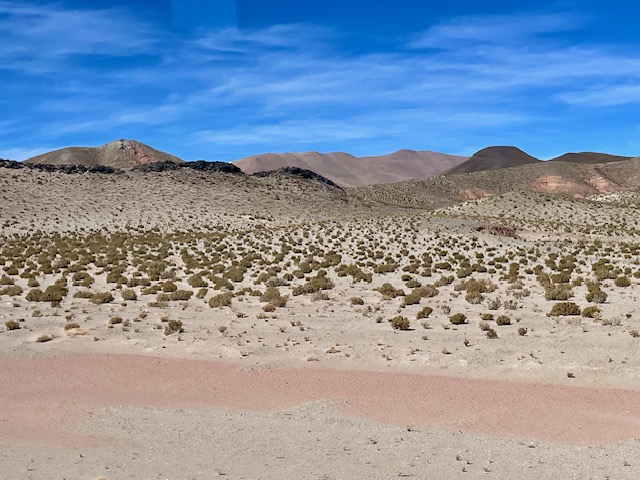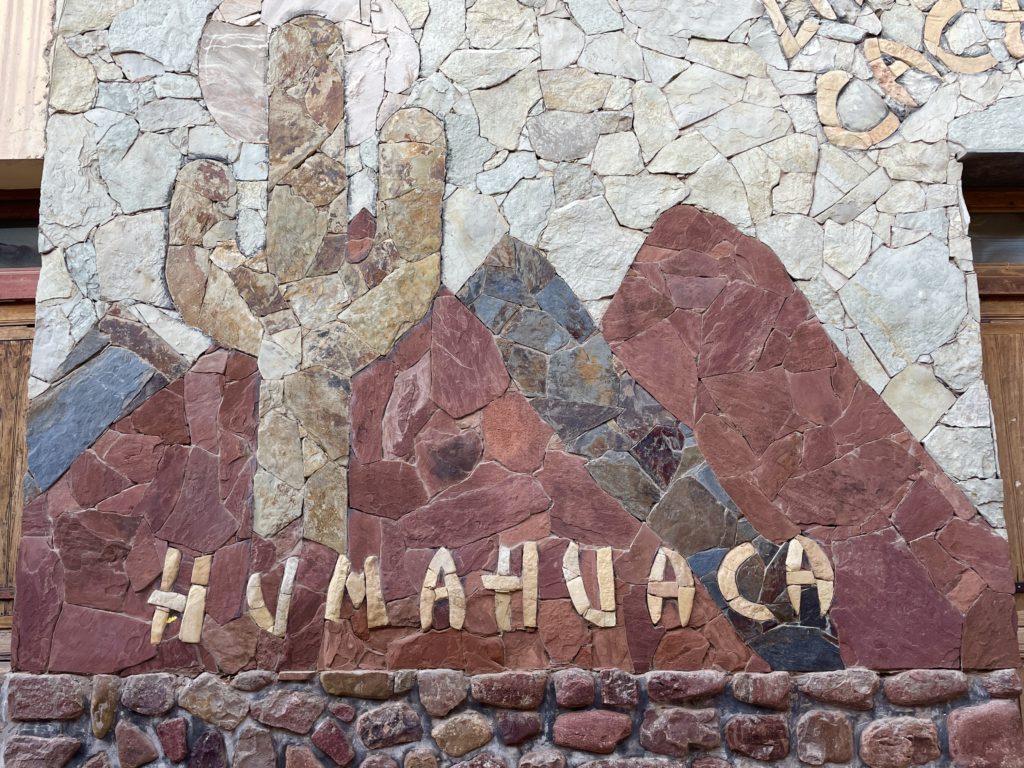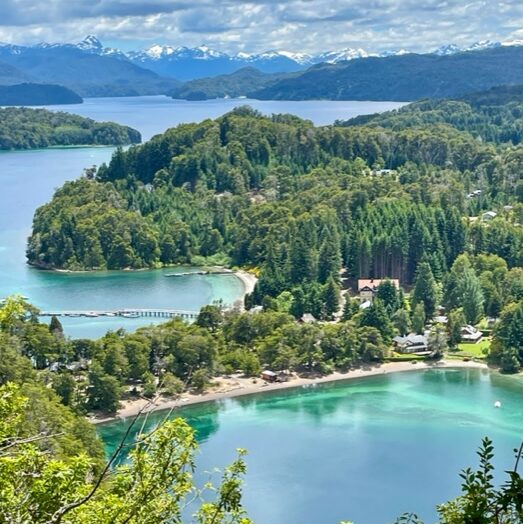
To cross the Andes Mountains, in the northern reaches of Chile, is a breathtaking experience in more ways than one. As my bus slugged over Jama Pass, we reached nearly 16,000 feet in the treeless, arid high-plains of the antiplano with mountains from Chile, Argentina and Bolivia surrounding us on all sides. I stood up to take a picture out the window and immediately felt the effects of elevation and the lack of oxygen in my head.






The route from Chile to Argentina over 16,000 foot Jama Pass


After a relatively painless middle-of-nowhere border control, we descended down into Argentina for hours along a famously engineered highway of steep switchbacks, and hairpin curves. Over more mountains we went, through the barren Salinas Grandes salt flats and finally, into the greener valleys below. But this wasn’t the Argentina I had known further south – that was the Argentina of cowboys, grasslands and glaciers on every mountainside. Furthermore, this certainly wasn’t the Argentina of tango and classy European delights in Buenos Aires. The northernmost provinces of Jujuy and Salta, as it immediately became clear, are a dramatically different part of this vast and varied country.








Argentina’s winding road, called the Lipán Slope, drops down from the Andes Mountains into a very different part of Argentina.


Here is a colorful map of the provinces of Argentina. I have traveled through all the green, blue and bright yellow provinces during my adventures. The Jujuy (who-who-ey) and Salta provinces (represented in red and dark pink) are in the far northern part of the country forming a three-way corner with Bolivia and Chile. These provinces are so far from the rest of Argentina that they have retained a distinct mixture of foods, music, arts, traditions, architectural styles, and clothing that are unique and treasured.
I spent my first few days in the region enjoying the picturesque villages of Humahuaca, Uquia, Tilcara and Purmamarca; these pueblos ooze the traditional stereotypes of this high antiplano region and are a tourist delight. Much of the structures in this area are made of clay and the pock-marked wood of the ancient Cardón cactus. This cactus, also known as the Mexican Giant Cactus, is now a protected species here in Argentina, but many examples of how it was used for beams, windowsills and benches are lovingly preserved in the buildings throughout the region.
Strolling these towns were a feast for my eyes: adobe church steeples wooed me toward the town squares, murals brightened the cobblestone streets and the constant presence of vendor’s tables overflowing with locally-made textiles, pottery and wool garments called my attention along the way.




















But in this region of Argentina, the real star of the show is the dynamic geologic wonders that lie just outside of town. The multi-colored, rugged and fascinating landscapes are the stunning masterpieces of ancient volcanos, rivers, sedimentary deposits, uplift, and erosion.
I spent my first morning at La Quebrada de las Señoritas, a conglomeration of colorful canyons formed by iron oxide, lava, and ash. As I clamored around the area with my guide, the morning sun saturated the slot-canyons in golden hues.










Then, I found a ride up to the Hornocal Syncline, or the “Mountain of 14 Colors”. Millions of years of sedimentation has created this natural work of art which comes alive in the direct sun of the afternoon.










To the west, the salt salar Salinas Grandes dominates the landscape. Eons ago, the way I understand it, the nearby Volcán Tugle erupted and spread lava, with a variety of minerals, all over this area. Some of those minerals contained salts. Over millions of years, during wet geologic periods, lakes formed, the salts separated and floated to the top. During dry periods, the water evaporated and the salts concentrated. Thousands of years passed and this complex salinization process created a thick crusty layer of salt.
At 82 square miles, Salinas Grandes is the largest salt flat in Argentina. Although salt salars like this one are fragile ecosystems, small local companies do mine it for sodium and potassium. The locals are fiercely fighting to protect Salinas Grandes from mega-lithium mines or “mega minerias” like the ones destroying the Atacama Desert across the border in Chile.








The natural hexagonal formations of Salinas Grandes Salt Flats, Argentina
Ofcourse, what visitors like me really love to do is play with the light and perspective in this vast immensity of white.






A little further to the south, I traveled into the province of Salta and settled into its capitol city and namesake, Salta. This is a cosmopolitan, yet historic colonial Spanish city which has worked hard to retain some of the distinct culture of the region. The buildings, plazas and covered arcades around the city square are all lovely, but Salta is really famous for its food: empanadas filled with delicious meats and potatoes, stews and locros with a variety of salsas and toppings, and wines made from high-elevation vineyards. Argentinian foods do not disappoint!






Something I really appreciated about Salta was that the streets are lined with orange trees, free for the public to enjoy.
My final stop in this region was an overnight jaunt into the mountains, where my bus groaned up the steep gravel incline and through uncountable switchbacks to the high-in-the-hills colonial town of Cachi. I loved walking its cobblestone streets, treelined plazas and old cemetery. In many way, it reminded me of the colonial pueblos in Colombia. I can never get enough of these quaint and historic mountain towns. It seems like a beautiful life indeed.












The charming colonial architecture and easy lifestyle in Cachi, Argentina




Kevin McConnell
Beautiful, Becky. Keep trecking. Looking forward to whatever is next